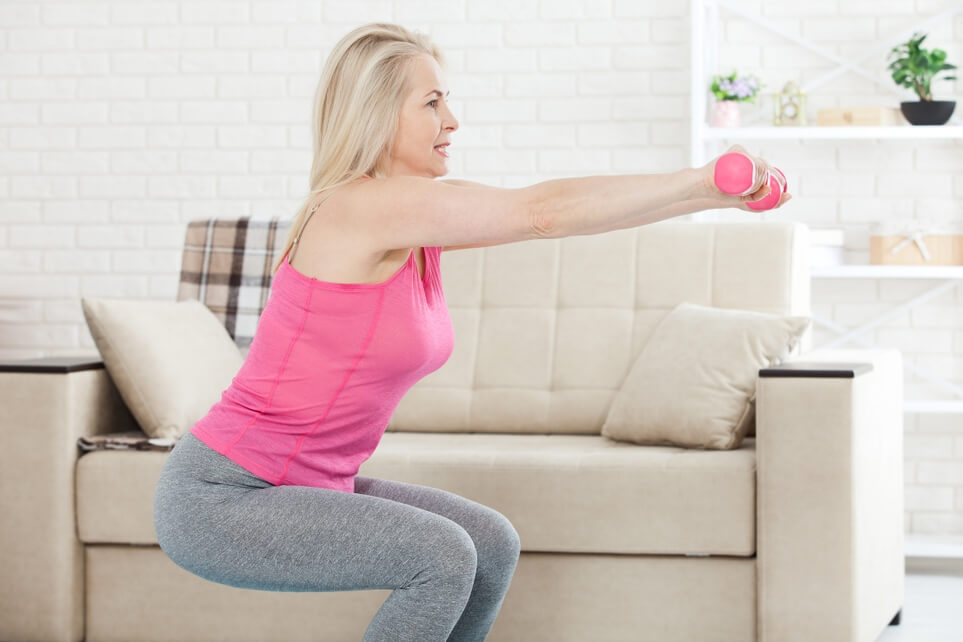The knee is a complicated joint, because we can’t strengthen the bone, ligaments, tendons and cartilage that surround it. What we can do for our aging knees is to strengthen the muscles that support and give it stabilization.
How To Care For Aging Knees
Caring for aging knees is easy with the squat exercise. Unfortunately the squat exercise has a terrible reputation for knee pain. If your knees are in pain with the mere thought of squats, then perhaps it’s time to investigate your squat technique with a suitably qualified health care professional.
The squat exercise shouldn’t cause you knee pain, as the squat movement begins and ends at the hips. The knee joint acts like a hinge, balancing the forces of gravity and allowing for the big muscle groups of the legs and buttock to move your weight up and down. Think of lifting the lid of a heavy old fashioned storage box. The hinge is not bearing the weight of the lid, but instead provides a pivot point for when energy is exerted to open or close the lid.
Similarly, when sinking back into a squat, our knees do not bear our body’s weight. Rather, our muscle strength counterbalances the forces of gravity as we come down or up from a squat. Knee pain levels when squatting should be no different from the pain level when standing. Knee pain during the squat exercise can be an indication of weak leg, buttock and core muscles. It is, therefore, no coincidence that the squat exercise strengthens the muscles of the legs, firms the buttocks and builds core stability.
Squats Build Muscle Strength
The squat movement pattern must be initiated at the hips, because it is here we find the origin of the biggest muscles of the human body, the muscles of the legs and buttocks. By using these muscles and not shifting your body’s weight to your knees, will see you squat pain free. The following describes the proper technique for a squat:
Firstly, place your feet hip with apart and stand with good posture. Feel your feet grounded through the heels, base of the big toe and 5th toe. Then push your hips back away from your knees. This movement will use your thigh muscles (quadriceps) to support your body’s weight on the descend, and extend your knees to straighten your legs on the ascend.
With this technique your thigh muscles will be busy supporting your body’s weight on the squat down, and your backside muscles (gluteal and hamstring) will push your pelvis forward and lift your trunk on the squat up. It becomes an effortless and romantic dance that pivots around the muscles of the hip joint and not an exercise of enduring knee pain.
Further, the calf muscles are used to keep your knees from travelling forward. The spine muscles (spinal erectors) stabilize your back, and the abdominal muscles (transversus abdominis) create a corset belt to protect your spine from damage.
Holistic Functional Fitness
The squat exercise seems to have all the answers for a complete physical fitness program and I wish I could prescribe a minimum effective dose of squats for maximum fitness benefit, but that would be boring!
Fortunately, our human body is complex and ever-changing; our body thrives on adaption, which makes for a life of wonderful adventures. It is this reason the Square Box Fitness exercise program changes every term. We look forward to perfecting functional exercises such as the squat, push-up, dead-lift, pull-up etc. and meet the challenges of staying fit as we age.
Let’s continue to enjoy good physical and mental health with regular exercise. If you would like to trial our WELLth exercise program for FREE I have provided the link below for you.
Live well with fitness!



Recent Comments